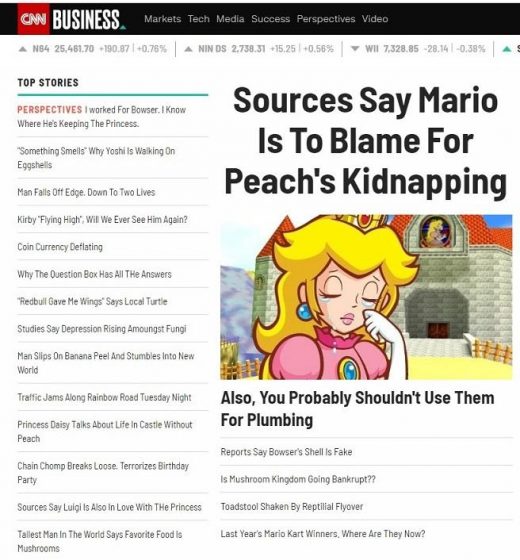Battle of the SERP: Combining SEO & PPC Forces to Win
— February 18, 2019
Legend has it there’s a castle deep in the heart of the second page of Google. Guarding a castle is a monster named Bowser. Every so often, Bowser will creep from his home and attack innocent listings on the first page (as well as the occasional princess) to bring them back to his castle never to be seen again… until now!
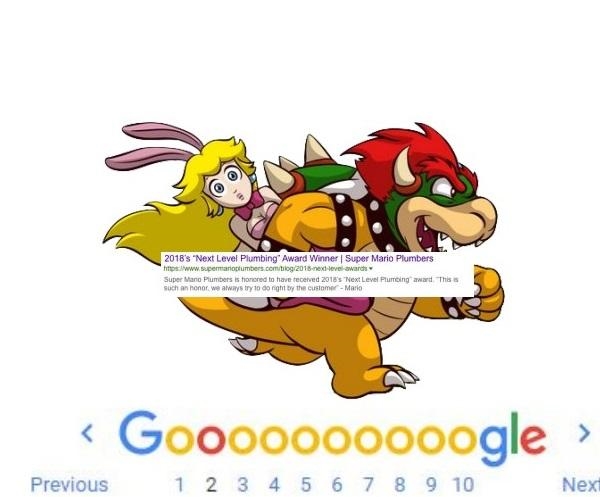
Are you ready to play Super Marketing Bros?
In today’s game, we’ll learn how you can use SEO and PPC together to maximize your marketing efforts – and rescue those listings from Bowser. Let’s go!
Here we go!
Today, we’ll be working on rescuing Bowser’s latest victims. Super Mario Plumbing is a plumbing company located in the extremely competitive market of Mushroom Kingdom. It’s a family-owned business, currently being run by Mario and Luigi after their father had an unfortunate run in with a carnivorous plant. With their listing, he’s also captured the kingdom’s beloved princess, Peach.
PRESS START: Understanding SEO & PPC
Before we get to rescuing, we need to understand SEO and PPC. So what are they? SEO and PPC both fall in the category of “inbound marketing” strategies. Inbound marketing is a type of marketing that allows prospects to find you, rather than you finding them. PPC and SEO work to ensure you show up when someone searches for your name, product, or service.
What Is SEO?
SEO, or search engine optimization, is the practice of structuring your site, as well as other areas of the web, to teach search engines what you do and who you are. In return, search engines will show your site to prospects via “organic listings” (listings that are not ads). Though you don’t have to pay for a click, SEO does involve major investments when it comes to time.
What Is PPC?
PPC stands for pay-per-click marketing (also known as SEM, or search engine marketing). PPC is the practice of purchasing a slot on the first page of a search engine, usually via live auction on selected keywords. Unlike SEO, PPC delivers fast results. The second your ads are live, prospects are seeing your business when they search for you.
So Which Marketing Strategy Should I Use?
Trick question!
For the past few years, Super Mario Bros plumbing has been making a common mistake. Mario and Luigi have been working against each other, debating on using PPC or SEO. The first step in rescuing their listing is to realize that both PPC and SEO have strengths and weaknesses that directly complement each other. Let’s dive into combined strategies, and why you should use these channels in concert.
Most Marketing Agencies Will Recommend This “Combined” Game Plan:
- Start off with strong and competitive PPC campaigns.
- Begin to rank via SEO for the successful PPC keywords.
- Back away from PPC, and run off SEO-generated leads.
When we sit and think about it, this “combined strategy” really isn’t combined at all! When you keep SEO and PPC separated like this, you are likely losing out on potential opportunities at an overall lower cost. Let’s look at a better combined strategy that leans on the strengths of both marketing strategies.
Level 1: Optimizing Basics to Help Both SEO and PPC
The first step to our combined strategy is to make changes to our existing marketing efforts that will positively impact both SEO and PPC.
Google My Business Optimization
So many marketers make the mistake of neglecting their Google My Business profile! This is a panel that should appear within the first page of Google when you type in your company name and city.
If we think of the entire internet as a virtual world, your Google My Business profile is your virtual storefront. This is what users see before going inside and purchasing something. How is your curb appeal? Does it welcome prospects?
Optimizing this panel is essential for both SEO and PPC. On the SEO side, optimizations build trust within the search engine, and verify your company as legitimate. On the PPC side, the information on you Google My Business profile can pull into marketing efforts via location extensions.
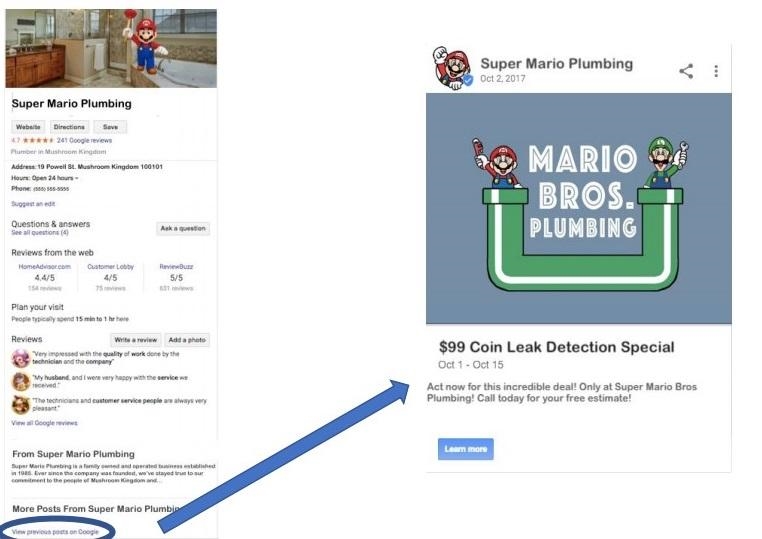
As far as which optimizations to make, I generally recommend doing as many as possible based on what makes sense for your business. For example, a plumber may benefit from a “Book Now” button; however, a candy store may not find this feature as relevant to their business. The most important thing is to have your name, address, and phone number exactly as it appears on your website.
Mobile Speed Optimization
The next combined optimization we’re going to look at is your performance on mobile. Mobile friendliness is both a ranking factor for SEO, as well as a quality score enhancer for PPC. These enhancements are extremely important for businesses who are looking to show up for voice search.
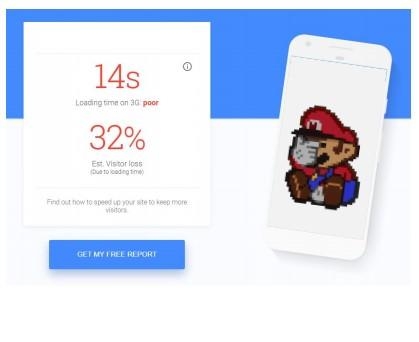
Level 2: Using SEO and PPC as a Team
While most people view SEO and PPC as two separate entities, there are ways they go hand in hand. Looking at the strengths and weaknesses of both SEO and PPC, we can develop a combined strategy to improve our online marketing across the board.
Using PPC for SEO Keyword Research
Only 5.7% of all new pages will rank organically within the first year of their existence. Due to the long optimization process that corresponds with this timeline, it is essential to use as much information as possible prior to investing resources on ranking a page. We don’t want Mario and Luigi spending hours on a piece of content to rank for the keyword “Why Mario Loves Peach” if it won’t yield a good conversion metric!
A great way to identify which keywords to focus on is to look at PPC data.
To do this, simply look at PPC trends:
- Consider ad copy that converted well and apply it to your landing page copy.
- Test different page structures via split tests on PPC (form fill layouts, CTAs, etc.) and apply your findings to your landing page.
- Monitor search volume and interaction rates on specific keywords before optimizing a page for them on SEO.
- Monitor the competitiveness on the PPC side of things to get a better feel for what you might be up against. (PPC competitiveness is not always an exact correlation but can be an indicator of a highly competitive SEO market.)
As you continue to make PPC optimizations to test what will work within SEO, you may also find ways to drive down PPC costs!
Increase Time on Site
It’s no secret that the majority of Mushroom Kingdom has a low attention span. While we all want our users to find value in our content, time on site is also a ranking factor for SEO. If you’re having a particularly hard time ranking a piece of content with a low time on site, PPC may be a good way of improving your metrics.
To do this, use existing data:
- Go to Analytics and view the average amount of time spent on each page.
- Revisit (and, if necessary, revamp) old pages and look for keywords in the content.
- If you have enough users accessing your site, generate a list of users who viewed a page with a good time on site and with similar content.
- Run ads on PPC to the struggling page. Use retargeting based on the successful page as your audience.
- Consider adding the struggling page as a sitelink on your branded campaign.
The idea behind this strategy is to get content in front of the right audience. If we find a list of people who have historically found your content relevant and interesting, they are more likely to spend more time across different pages.
Implement Branding Strategies
If you’re anything like Luigi, you may be wondering, “Why should I run paid ads targeting my own name when I should already have organic listings taking care of those searches for free?” This is a great question. It’s understandable that when someone searches you, they’re already showing a strong intent to convert. So how can you effectively utilize PPC for your branding without spending all of your hard-earned coins?
Break out your branding goals.
Lean on SEO for long-term branding (aspects that are not likely to change over time) and negate related search queries from PPC. Consider SEO for:
- Your company name
- Your mission statement
- Founder information
- Location
Lean on PPC for short-term branding (aspects that are likely to change over time) that shows off your company’s personality. If nothing else, run a PPC campaign to bump an additional competitor off the first page for your own name. Consider PPC for:
- Press releases
- Promotions
- Awards
- Charity work & community involvement
- Seasonal Offers
Negative Press
Now, we hope you haven’t been accused of kidnapping a princess. But if you have some negative press come up (these things happen – we don’t judge), PPC can help with that! You can use paid search as your first line of defense.
Here’s how:
- Find a list of keywords your prospects may be searching to locate information on the incident, and then take note. (Is there a common question people are asking you can answer? Is there a solution you can provide?)
- From there, write a piece of content answering those questions and providing your solutions, and run a campaign on the keywords.
- Include sitelinks in your other ads that continue to allow transparency across your campaigns.
- Your ads will appear before other sources, so your prospects can get the whole story from you rather than someone else.
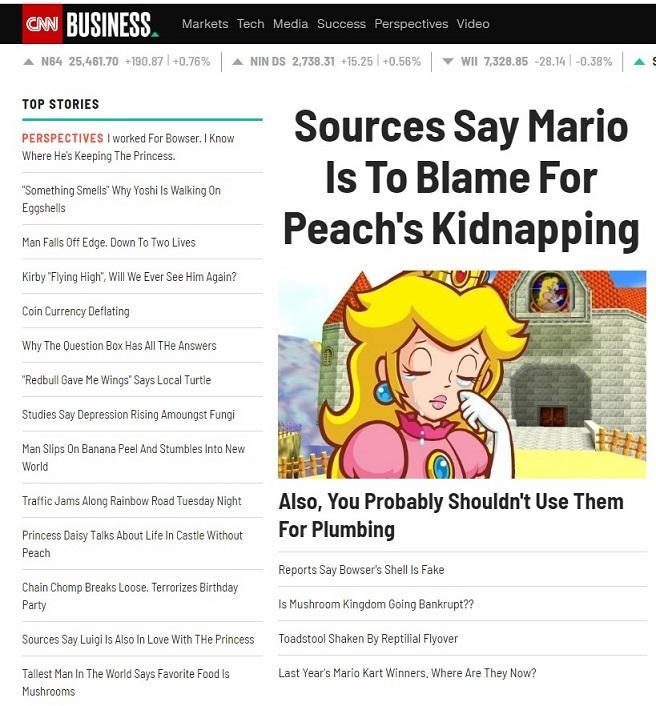
Level 3: Keeping the Princess Safe
As with everything inbound marketing-related, continued optimizations are essential to success. Rescuing listings takes a lot of time and effort, especially when dealing with the SEO side of things. It’s generally a good idea to review strategy at least once a quarter and regularly review your keywords, content, and scheduling to ensure you’re using all resources available across both SEO and PPC to better your marketing.
Congratulations! You rescued the princess – and your listing!
Digital & Social Articles on Business 2 Community
(66)

